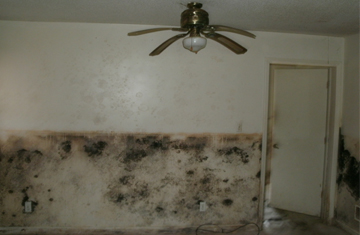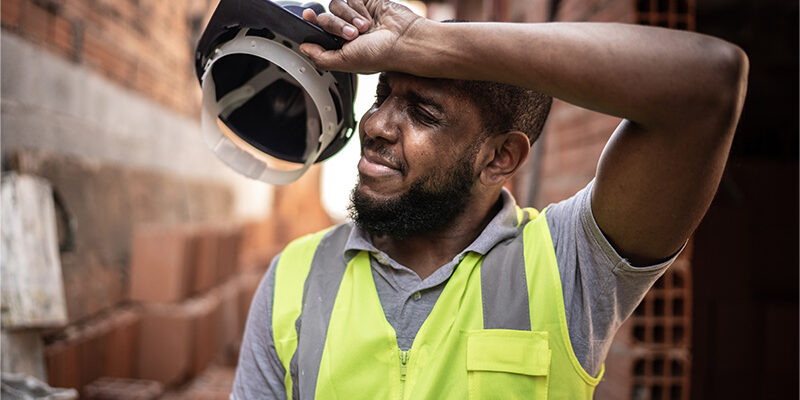The Carolina Protocol (TM)

Mold remediation has now become an established business, as many restoration companies have added mold work to their service offerings.
In addition, the restoration community has seen the emergence of companies that only do mold remediation. No water damage. No fire or smoke restoration. Just mold.
With this growth into mold work, the actual processes used for mold remediation have become more standardized. Until now, these procedures have usually required much labor.
I would like to introduce you to and explain a new process that could significantly lower the labor content in mold remediation work while still performing 100 percent acceptable work.
Removal and cleaning
The accepted process for mold remediation is either removal of the contaminated material or cleaning the contaminated surfaces.
The removal process is straight forward. A common example is the removal of mold-contaminated drywall. The drywall is removed from a wall, bagged and discarded.
By contrast, the cleaning process is used on structural elements that will not be removed such as framing lumber. This step usually means some form of aggressive or abrasive cleaning such as sanding, scraping, wire brushing, dry ice or soda blasting, etc. This is the part of the remediation process that has a lot of labor content. All this work is done by following the proper procedures that include building containment, the use of negative air pressure and personal protective equipment (PPE).
Another process
However, there is a newer process that has been successfully used by some of the leading mold remediators in the United States. This process is known as The Carolina ProtocolѢ.
The name comes from the geographical location of some of the initial mold remediators who experimented with this process and proved that it worked. They passed virtually 100 percent of post-remediation clearance testing and verification performed by a highly qualified Certified Industrial Hygienist (CIH).
The Carolina Protocol will save significant amounts of time and money and deliver a properly performed mold remediation project.
The Carolina Protocol process involves the use of regular hydrogen peroxide, six to eight percent in strength, as the cleaning agent. The appropriate steps are as noted below and should be used by trained technicians with use of personal protective equipment (PPE).
1. A complete and detailed inspection of the contaminated site is performed.
2. An Indoor Environmental Professional (IEP) is consulted if appropriate.
3. A work protocol is written by either an IEP or the remediation contractor.
4. The building of proper containment for the work site is completed, and correct negative air pressure is established.
5. Based on the protocol, demolition and/or removal of what material can and should be removed is performed.
6. The remaining structure (framing lumber, plywood, oriented strand board, etc.) is to be cleaned using hydrogen peroxide.
a. All surfaces are HEPA (high-efficiency particulate air) vacuumed.
b. All materials should be dried, if needed, to below 16 percent moisture content.
c. All affected surfaces are sprayed with hydrogen peroxide until they are visibly wet.
d. The hydrogen peroxide is allowed contact time according to the manufacturer’s label instructions.
e. All the surfaces are again HEPA vacuumed.
7. An EPA-registered biocide should be applied, following label directions, to ensure remaining microbes are destroyed.
8. All materials should have been dried to a proper dry standard, which must be below 16 percent moisture content, double-checking to ensure all materials are dry.
9. An inspection is performed by the remediation contractor. This inspection may include the use of a particle counter or other sampling tools or techniques.
10. The use of an IEP for clearance testing, if appropriate.
11. Consideration should be given to applying some form of surface protection, which will inhibit future microbial growth.
12. Reconstruction is performed, when necessary, in accordance with local building codes and ordinances.
The use of six to eight percent strength hydrogen peroxide — not the three or four percent sold in retail stores or pharmacies — as a cleaning agent, not a killing agent, is the key to the Carolina Protocol.
To kill… or not to kill
Many of the students I see in my microbial remediation workshops attend with the predetermined idea that mold remediation means “killing” the mold. This is incorrect.
The published guidelines and standard for microbial remediation states that the contamination should be removed. The word “kill” is not used. In fact, just killing the mold (and there are biocides that will do this) may cause more problems than doing nothing at all.
There can be confusion as to the difference between kill and remove. I explain the difference this way:
- You arrive at home and find a bee in the living room. You kill the bee with a fly swatter. Did you kill the bee? Yes. Is the bee still in your home? Yes. So killing the bee did not remove the bee.
- You arrive at home and find a bee in your living room. You open the window and bee flies away. Did you kill the bee? No. Did you remove the bee? Yes.
The same is true with mold remediation. Our job as remediators is to remove the mold… not kill the mold. Hydrogen peroxide removes the mold by chemically “burning” it.
Power of peroxide
Most of us have experienced a small cut and used hydrogen peroxide on the open cut. We have seen the “bubbling” action in the cut. This “bubbling” is the chemical release of oxygen, which is oxidation, the chemical burning of the contamination.
In the example of the cut, the bacteria are destroyed by oxidation. In the case of mold growing on framing lumber, the mold and its hyphae structure, the mold is destroyed by the same oxidation. Think of it like a very small fire burning the “forest” of mold. And the really unique part of this is the hydrogen peroxide also follows the roots of the mold down into the material on which it was growing, thus removing all traces of the mold.
Value of the vacuum
Before using hydrogen peroxide, it is important that all the above steps are followed, especially the initial HEPA vacuum.
The purpose of this initial HEPA vacuum is to remove as many of the spores from the hyphae as possible to minimize sporulation.
Then, after the application of the hydrogen peroxide, the second HEPA vacuum is to clean up anything dislodged by the hydrogen peroxide.
Is this too simple?
The Carolina Protocol seems to be too easy, like the old, incorrect idea of using bleach (hypochlorite), to kill mold. And when I first heard about the use of hydrogen peroxide, I was very suspect that it would work, thinking “Here comes the next bleach idea.”
However, the remediators who have used the Carolina Protocol on more than 200 jobs — with the exception of just one job — have passed clearance testing. This means, when performed correctly, the Carolina Protocol works.
This process can significantly reduce the amount of manual labor that has been used for sanding, scraping, wire brushing, blasting and other labor-intensive steps.
Richard Driscoll has a B.S. in mechanical engineering from Clarkson College of Technology, an MBA from the University of Dayton and is currently working on his doctorate. He is a professor at Webster University where he provides graduate and undergraduate level lectures. He is an IICRC Certified Master Restorer, Master Textile Cleaner and an approved instructor. Driscoll has been consulted by state governments on legislation related to the cleaning and restoration industry. He also is the author and instructor for Restoration Sciences Academy’s MR-110 and MR-210 microbial remediation classes and MR-211 trauma scene clean up class. He can be reached at [email protected].












